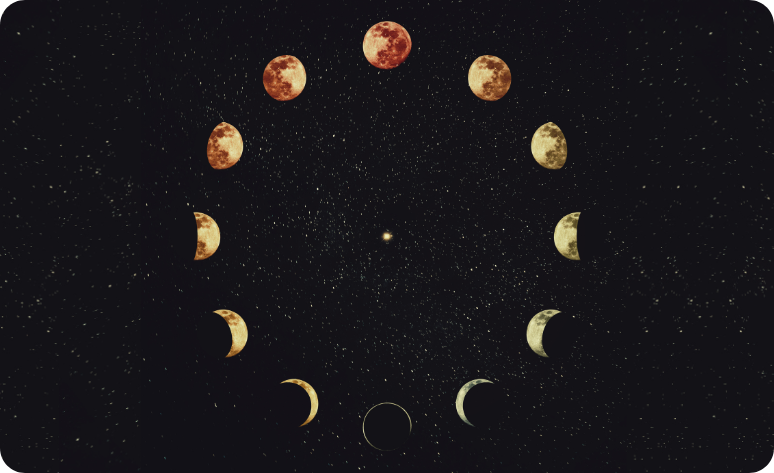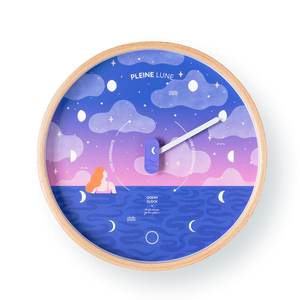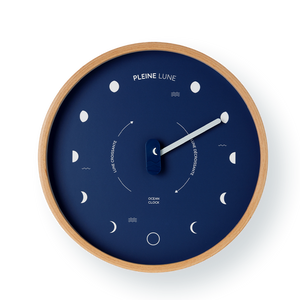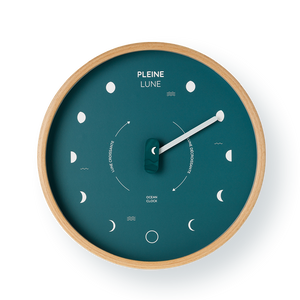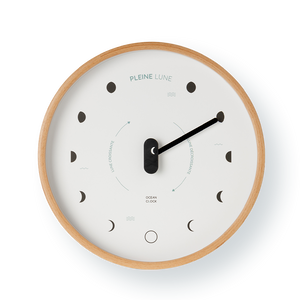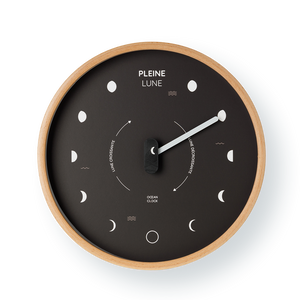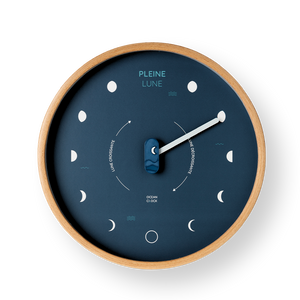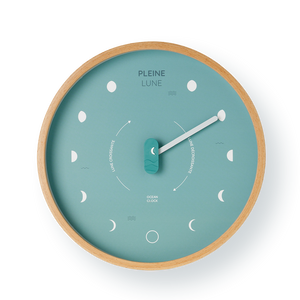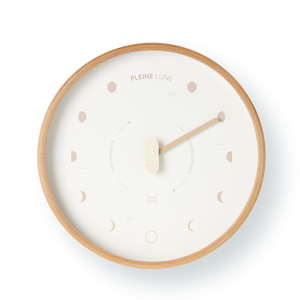Understand in a Flash!
How does a lunar phase clock work?
A lunar clock, also known as a moon phase clock, is a timepiece that indicates the current phase of the moon.
As the moon orbits the Earth and the Earth orbits the Sun, the moon's appearance gradually changes throughout the month.
From the full moon to the new moon, including the waxing and waning crescents, you'll discover all its different face
Who invented the moon phase clock?
The lunar clock has its roots in the observation of the Moon’s natural cycles, a practice that dates back thousands of years.
Ancient civilizations such as the Egyptians, Babylonians, and Chinese used the phases of the Moon to structure their calendars and guide agricultural activities.

However, the lunar clock as we know it today emerged in the 16th century, thanks to the rise of mechanical timekeeping in Europe.
One of the first clocks to incorporate the moon phases was created by Jost Bürgi, a 16th-century Swiss clockmaker renowned for his innovations in astronomical horology.
These clocks were primarily used by the elite and scientific institutions, enabling precise tracking of the moon’s phases and other astronomical phenomena. The Moon, with its influence on tides and natural cycles, became a key feature in both marine and astronomical clocks.
Today, the lunar clock is both a practical and decorative object, allowing us to follow the lunar cycle with accuracy while adding a touch of poetry to our interiors a gentle reminder of the natural rhythms that connect our planet and its satellite.

How it works
In a lunar clock equipped with a hand to indicate the moon phases, the mechanism relies on a precise system that follows the Moon's cycle.
Unlike models with a rotating disc, this type of clock uses a hand that slowly moves around a dial specifically designed to represent the various lunar phases.

We chose to represent a lunar clock with 12 distinct phases. The mechanism follows the same general principle of tracking the lunar cycle but with increased precision.
The lunar cycle, which lasts about 29.5 days, is divided into 12 equal segments, each corresponding to a more detailed stage of the Moon’s cycle.
Instead of the traditional eight phases, this clock displays a more gradual progression, offering a finer view of the subtle changes in the Moon’s appearance.
Each illustration on the dial represents a specific phase, ranging from the new moon, where the Moon is invisible, to the full moon, when it is fully illuminated with intermediate stages such as waxing crescent, first quarter, and waxing gibbous.

The clock’s hand moves slowly, pointing each day to a new phase, so that each symbol corresponds to a precise stage in the lunar cycle. This finer representation allows the user to follow more accurately the subtle changes in the Moon’s brightness over the days. The illustrations show more subtle variations between phases, such as the transition between a thin crescent and the first quarter, or between a gibbous and a full moon, providing a more detailed reading of the complete lunar cycle. This makes the clock especially aesthetic while offering a more advanced scientific precision for enthusiasts of the Moon and astronomical phenomena. Because the hand moves very slowly, we at Ocean Clock chose to add a second hand. At the center of the lunar clock, it ticks one step every minute, ensuring that the clock is working correctly.

8 main phases in detail
The Moon goes through eight distinct phases during a complete lunar cycle, which lasts approximately 29.5 days. Each phase is defined by the relative positions of the Earth, the Moon, and the Sun.
- New Moon : the Moon is aligned between the Earth and the Sun, and its illuminated side is hidden. It is invisible from Earth.
- Waxing Crescent : A thin crescent appears after the new moon, as sunlight begins to illuminate a small part of the visible face.
- First Quarter : The right half of the Moon is lit, marking one-quarter of the lunar cycle.
- Waxing Gibbous : More than half of the Moon is illuminated, but it is not yet full.
- Full Moon : The visible face of the Moon is fully illuminated, appearing as a bright, round disk.
- Waning Gibbous : After the full moon, the light begins to decrease. A large portion is still visible, but gradually diminishes.
- Last Quarter : The left half of the Moon is lit.
- Waning Crescent : Only a small portion remains illuminated before returning to the new moon.
These lunar phases shape our calendars and influence various aspects of nature, such as tides and agriculture, while also symbolizing transformation and renewal.
